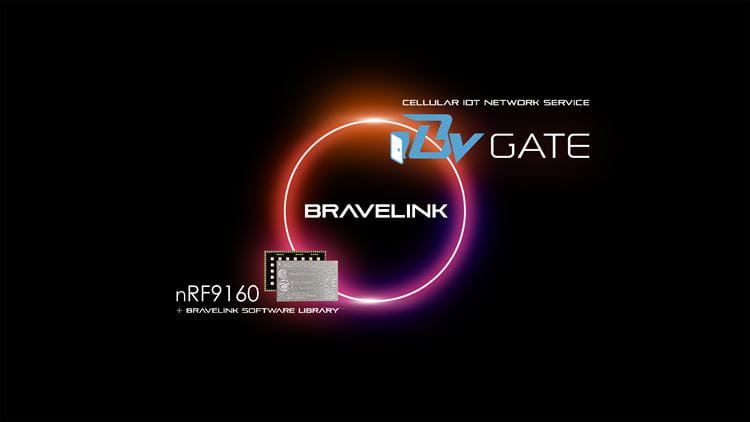Audio
Unleash the full potential of Bluetooth LE Audio with Nordic

Japanese IoT solutions company Braveridge has launched ‘BraveLINK’ and ‘BraveGATE’ an automated network connection error solution and an IoT platform that together accelerate cellular IoT deployment for developers designing with Nordic Semiconductor’s nRF9160 System-in-Package (SiP).
Braveridge has conducted a program of extensive testing and debugging to generate a catalogue of detailed error logs about a wide range of network connection problems. These error logs are easily accessible via common debug and interface tools directly from the nRF9160 SiP’s Arm Cortex-M33 dedicated application processor. Using the information in the error logs, Braveridge has then generated a library of software fixes that resolve these common network errors. Braveridge has then compiled these fixes into the BraveLINK library which is available as a pre-programmed library in the nRF9160’s application memory.
This solution is only possible because the nRF9160’s dedicated application processor with 1 MB Flash and 256 KB RAM is embedded on the same package as its LTE-M/NB-IoT modem. This contrasts with competitive cellular IoT modems which typically use a system with ‘built-in’ applications and an external processor communicating with the cellular modem via UART link. Further, when configuring conventional cellular IoT modems, at least two Cloud servers are required to share network data and commands between the device and the Cloud application. Such systems are prone to network connectivity issues such as frequent device resets and reboots, session errors and broken data that require a complex development and debugging process. The network topology makes it very difficult to externally diagnose unexpected modem operating behavior and in turn use the external processor to solve the network connection problems.

The BraveGATE Cloud Service is an IoT platform which solely uses cellular IoT devices powered by the nRF9160 SiP acting as servers (and programmed with the BraveLINK library, to logically resolve complex network communication errors). In the system, the user application server functions as the ‘client’ for end devices. In operation, the user application server sends an HTTP request to the nRF9160 SiP with BraveLink functioning as the ‘server’. BraveGATE then converts the HTTP command to a binary request and sends it to end devices that then return requested data in the same binary format to BraveGATE via the LTE-M LPWAN. BraveGATE then converts the binary data to an HTTP format to respond to the client. Because the interface between BraveGATE and the user application server is only HTTP, users are unaware of the binary transmission, and the system operates as an on-demand interface for the user application.
The key advantages of the system are that BraveGATE needs no modification to suit the specific operation of the cellular IoT server, saving months and sometimes years of development time. The cellular IoT device maker needs only to focus on the application firmware for the end-device and the Cloud application; everything in between is resolved by BraveGATE. And, unlike conventional IoT platforms, no MQTT protocol is required for data transport. The result is an IoT platform that’s simple to deploy, accelerating commercialization. According to Braveridge, the result is a 50 percent cut in development time and at least a 90 percent cut in costs.
The nRF9160 SiP is certified for global cellular IoT applications and comprises the dedicated application processor and memory, multimode LTE-M/NB-IoT modem with integrated RF Front End (RFFE), GNSS, and power management in a compact 10 by 16 by 1 mm package. It includes Arm TrustZone® for trusted execution, and Arm CryptoCell™ 310 for application layer security. The nRF9160 SiP’s LTE modem supports both SIM and eSIM, offers 700 to 2200 MHz LTE band support, 23 dBm output power, -108 dBm RX sensitivity in LTE-M, and -114 dBm RX sensitivity in NB-IoT mode, and single pin 50 Ω antenna- and UICC-interfaces.
Related products include the nRF9160 DK, a precertified single board development kit and the nRF Connect SDK, a software development kit which includes application layer protocols, application examples, and LTE modem firmware offered as precertified and precompiled downloads.
“Without the nRF9160 SiP’s dedicated application processor, these products wouldn’t be possible,” says Yasunari Kohashi, Braveridge, CEO. “Previously, an interrupt condition coming from the LTE-M network had to be processed by an external application processor via UART, which was a major task. However, the nRF9160’s embedded application processor now makes this task overwhelmingly easier and has significantly reduced the overall bug rate.”
“Around 3,000 nRF9160-powered BraveLINK installations have been operating continuously over the last two years, with no communication errors related to the networks.”
Braveridge offers several nRF52 Series or nRF9160 communication, sensor and power units ready for operation with the BraveGATE IoT platform.
Unleash the full potential of Bluetooth LE Audio with Nordic